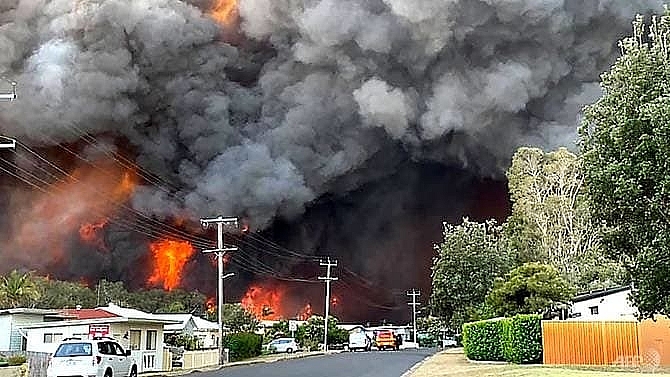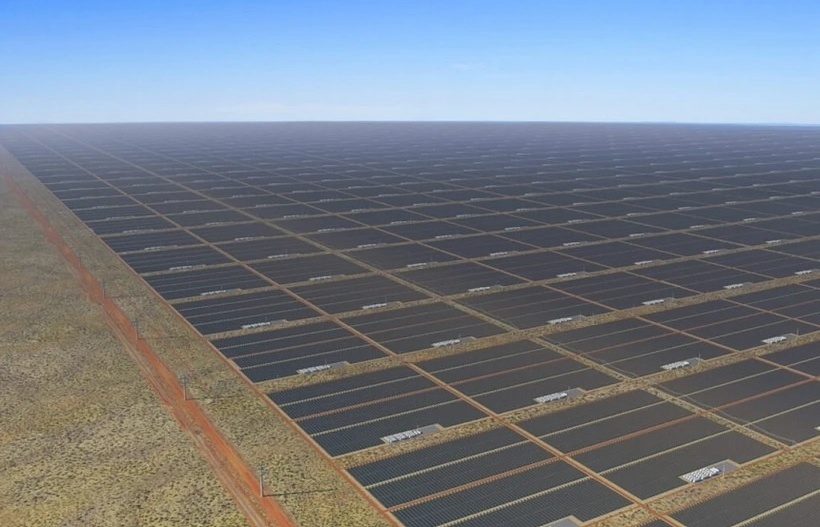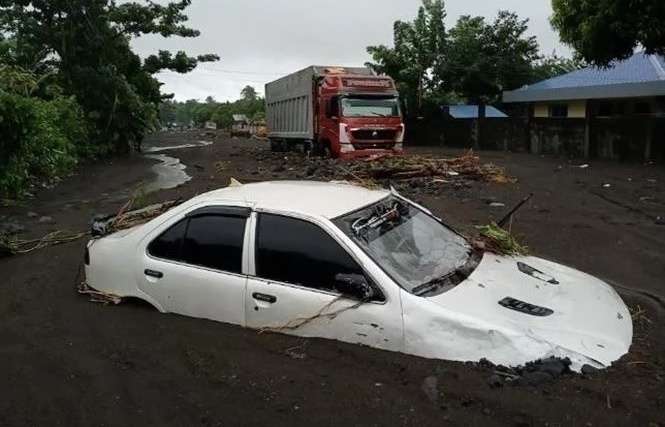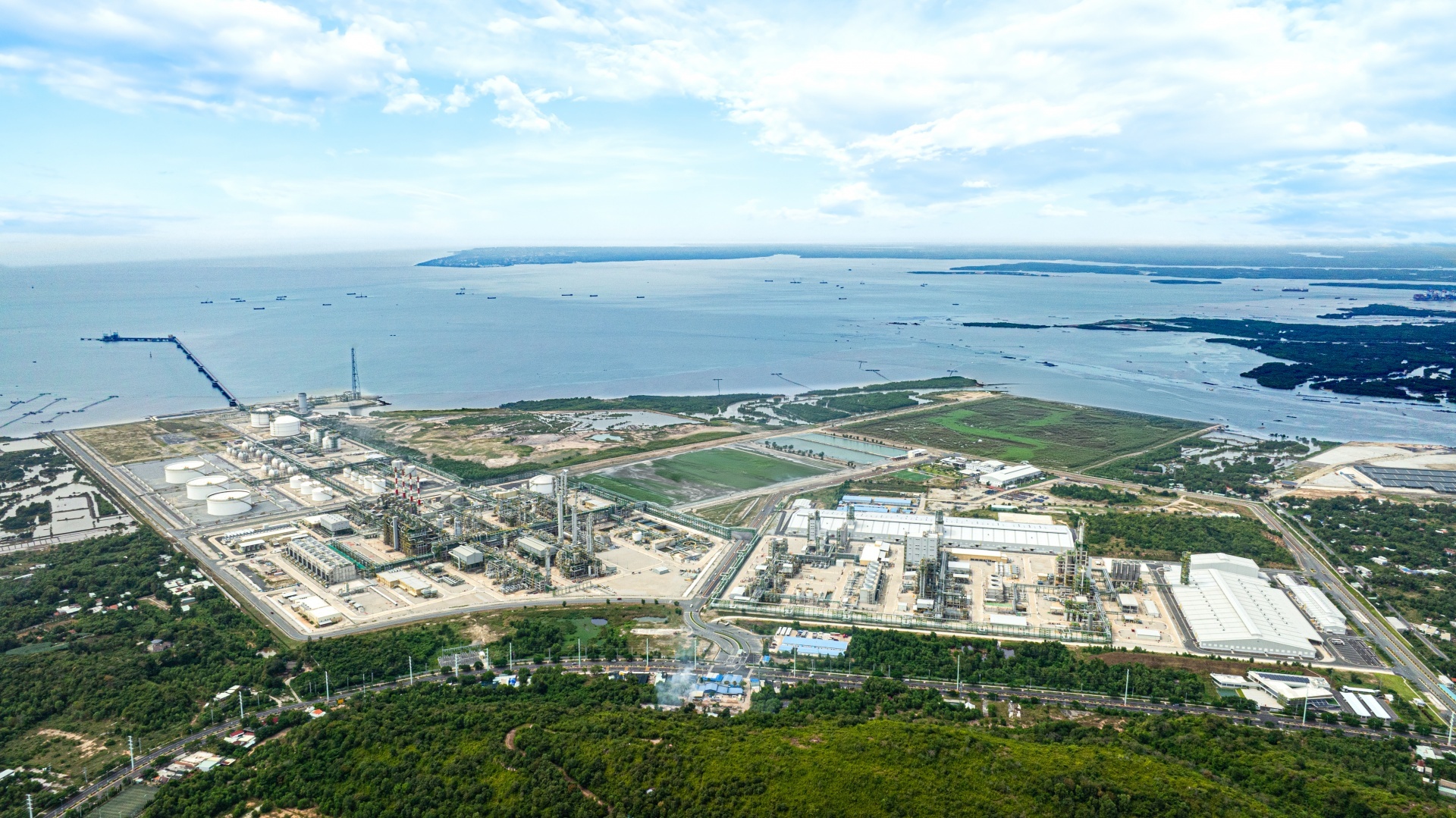Two dead, at least 150 homes lost in Australia bushfires
 |
| Flames from an out of control bushfire seen from a nearby residential area in Harrington, some 335km northeast of Sydney. (Photo: AFP/Kelly-ann Oosterbeek) |
Prime Minister Scott Morrison said that, if needed, the military could be called on to help some 1,300 firefighters who are tackling around 100 separate blazes.
Several people are still said to be unaccounted for and 30 more have been injured -- mostly firefighters forced to work for hours on end in smokey, hot and smouldering scrubland and blazing forests of towering eucalyptus.
"Sadly, we have lost two Australians and I fear that we will lose more before the day is out," Morrison said as hundreds of civilians also volunteered to help their hard-hit neighbours.
Emergency services said they had found the remains of one person in a car and a woman died despite medics struggling for several hours to save her.
As hot and windy weather eased slightly on Saturday, the number of most serious fires fell from an unprecedented 17 on Friday to just three.
But across an area spanning almost 1,000km, schools were burned, at least 150 homes were destroyed, while the authorities were forced to evacuate detention centres and old people's homes.
Bushfires are common in Australia and a vast corps of firefighters had already been tackling sporadic blazes for months in the lead-up to the southern hemisphere summer.
But this was a dramatic start to what scientists predict will be a tough fire season ahead -- with climate change and unfavourable weather cycles helping create a tinderbox of strong winds, low humidity and high temperatures.
New South Wales premier Gladys Berejiklian warned that next week's weather forecast "could mean we're not through the worst of it".
Morrison, whose government has played down the threat of climate change sought to deflect questions about what impact it may have had.
"My only thoughts today are with those who have lost their lives and their families," he said.
"Australia has been battling ferocious fires for as long as Australia has been a nation, and well before. And we will continue to do so."
TOO LATE TO LEAVE
Firefighters had described the conditions Friday as "difficult" and "dangerous".
"Unfortunately, many people have called for help but due to the size and speed of the fires we couldn't get to everyone, even by road or helicopter," New South Wales firefighters said.
In some areas, residents were stuck and told to simply "seek shelter as it is too late to leave".
Local radio stopped normal programming and provided instructions about how to try to survive fires if trapped at home or in a vehicle.
Across the central coast, smoke could be seen billowing high into the sky and residents took to social media to post photos and videos of smoke-laden tangerine skies and flames engulfing storeys-tall eucalyptus within sight of their homes.
Authorities said some of the fires were creating their own weather conditions -- pyrocumulus clouds that enveloped entire towns.
Meanwhile, high winds flung embers and burnt debris far ahead of the fires' front lines, depositing the dangerous detritus on the balconies and front yards of unsuspecting residents.
Despite easing conditions, a prolonged drought and low humidity levels will continue to make circumstances combustible.
Earlier this month, some of the same fires cloaked Sydney in hazardous smoke for days. On Saturday it was Brisbane's turn, with the fires enveloping the city centre in a veil of acrid fog.
Swathes of Australia have gone months without adequate rainfall, forcing farmers to truck in water, sell off livestock or leave their land to lie fallow.
Jim McLennan of La Trobe University said the bushfires were "unprecedented", coming so early in the season and in areas that usually have moist soils and vegetation.
"However, the fire situation is consistent with our new world of bushfire threat associated with climate change".
What the stars mean:
★ Poor ★ ★ Promising ★★★ Good ★★★★ Very good ★★★★★ Exceptional
Related Contents
Latest News
More News
- Thailand asks Laos to waive visa fee at border checkpoints to boost tourism (October 21, 2024 | 17:23)
- Laos pledges to continue efforts to empower girls (October 21, 2024 | 17:17)
- Chinese electric vehicle maker to build plant in Indonesia (October 21, 2024 | 17:12)
- Vietnam Elevator Association introduces Elevator Safety Application to the world (October 18, 2024 | 09:00)
- A taste of the future - the go-to spot at the Worldchefs Congress & Expo 2024 (October 15, 2024 | 16:11)
- Jakarta to impose household waste levy (October 14, 2024 | 16:49)
- China, Laos plan to build connectivity development corridor with Thailand (October 14, 2024 | 16:19)
- Singapore keeps monetary policy unchanged (October 14, 2024 | 16:00)
- Indonesia aims to become key chain in global EV industry (October 14, 2024 | 15:59)
- RoK, Singapore to deepen AI, defence cooperation (October 09, 2024 | 16:18)



 Tag:
Tag:




















 Mobile Version
Mobile Version